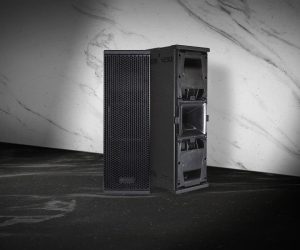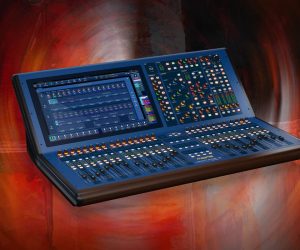
Review: Revolabs Executive HD
A very different take on conferencing microphones.
Text:/ Graeme Hague
Almost every issue of AV we look at some kind of latest, state-of-the-art boardroom or conference installation and a common theme in all these projects is the need to cover all the bases – have a system in place that will cater for every eventuality. Unfortunately, those best-laid plans can go awry when management people have silly ideas that take them away from that carefully designed AV system; the chairman who decides this month’s board meeting would be nice to have in banana lounges on a sunny balcony, perhaps.
For more flexibility in these situations Revolabs has developed a radio microphone system with multiple channels and a choice of discreet, matching microphones to suit any occasion. While the idea of using radio mics isn’t so new or innovative, Revo has streamlined a wireless system design that’s specifically for conference use.
PAIRING OFF
The Revolabs Executive HD Wireless System comes in two types of base stations, a four-channel and an eight-channel model. Neither has any microphones included – you buy these separately according to your needs. However, the bases stations do come with a matching charger station that also acts as a permanent holder for your microphones – being connected long-term to the charger isn’t a problem – and there’s a USB connector on the charger for updating the microphone’s firmware and provides a facility for Express Pairing.
Before we go further I’ll clarify this concept of ‘pairing’. Borrowed from the world of Bluetooth devices it’s a term to describe the process of associating a particular microphone with the desired channel on the base station. The Executive HD systems aren’t in any way pre-configured with certain types of microphones hard-wired to permanent channels. Anything can go anywhere and assigning microphones to inputs is called pairing.
Audio Products Group:
1300 134400 or www.audioproducts.com.au
HD Executive 8 Channel receiver:
$9699.00 inc GST AU
$12499.00 incGST NZ
Microphones (all types are the same price):
$649.00 inc GSTAU
$845.00 inc GST NZ

FACTORY WARRANTY ROADSIDE ASSIST
Straight out of the box, aside from network capabilities and some global settings, which I’ll explain below, when it comes to actual signal processing the base stations are little more than multi-channel radio receivers with mini-Phoenix connections on the rear, amounting to balanced outputs and inputs for each channel. Some type of mixing or signal processing device console is a must for EQing or inserting signal modifiers just like any run-of-the-mill radio microphone. A software package provides a GUI that displays the microphone status – such as On, Off or Charging – its type (omni, lapel, etc), the firmware version and battery condition. This is in Standard mode, but there is ‘Gold’ mode that’s tied in with an extended service plan that also frees up a few extra greyed-out DSP functions in the HD Control Panel. The service plan offers replacements for any faulty items and extended warranty – including batteries and more –within the agreed period. Services plans are always worth considering, but to be honest, those DSP functions are nothing to get excited about. There’s a rudimentary gain control and extra microphone muting and locking functions. Really, they’re the kind of things that could be made available anyway and Revolabs should let the Gold service plan option stand on its own as a completely separate consideration.
HI-DEF OR MAX-DENSE
The global settings in the GUI are divided in two sections. One determines what type of external controller you might have and includes choices like Biamp Audia or Nexia, a couple of Clear-One units and a generic ‘Control System’. Once any of these are selected, other parameters for flow control, speed and selecting either an RS232 or network connection become available. On the Revolab Executive HD, you can decide between High Definition or Max Density audio. The HD mode gives users a full 50Hz-20kHz frequency range and the Max Density reduces the upper figure only, offering 50Hz-12kHz and effectively allowing more mics to operate in the vicinity, with up to 32 in HD mode, 40 in Max density mode. The Revolab base stations can be interconnected using a synchronisation (bus) cable, again with mini-Phoenix connectors, and, by properly selecting DIP switches on the rear, denoting the unit as either primary or secondary (or slave). Local conditions, including surrounding electronics and other radio devices, will determine at what point, as you add more base stations, you’ll need to try the Max Density mode to squeeze in some more channels.
Conversely, you can reduce the transmitting power of the Revolabs Executive HD from seven (highest) down to zero in the rare event of encountering interference in nearby equipment caused by the microphones or, a more likely scenario, you wish to use multiple Revolabs systems in the same building without any risk of interference. There is also a low-pass filter and a front panel lock – the front panel buttons and LCD readout allows you access to the global settings, a choice of DHCP or Fixed IP and finally a Tabletop Mute mode that forces all operating tabletop microphone models to obey the mute button of any and each mic. That sounds like a dangerous recipe for board members to squabble over who mutes who.
There are three different types of microphones plus two adapters, all built on top of the same transmitter device. An omni-directional and directional microphone are the two ‘tabletop’ boundary models and there’s a lapel model. One adapter is designed as a straightforward conversion for a normal microphone like a Shure SM58 and the second adapter is for Countryman headsets.
Pairing any of these to a particular channel entails holding the microphone’s mute button for 10 seconds to power-down, pressing it again for another seven seconds to enter pairing mode then holding the base station’s channel button for seven seconds to establish a link ‑ a slightly convoluted process ‑ but for most users, pairing is a one-time affair, performed during commissioning.
ALL DECT OUT
There is no particular channel or frequency allocated to a microphone as this is a DECT-based (Digital Enhanced Cordless Telecommunications) system that uses a combination of FDMA (Frequency Domain Multiple Access) and TDMA (Time Domain Multiple Access) to find an available timeslot or channel pair, performs a handshake with the transmitter and then makes the hop to this slot – a process that happens several times per second. Because these are digital signals, RF dropouts don’t mean the end of the world, as signal buffering allows error correction before output.
If you do have any problems, each microphone has a multi-coloured, flashing LED that, depending on the colour and frequency of the blinking, is giving you one of 11 status messages. Well done, if you can memorise all these, although the Off ‘status’ (no flashing at all) is pretty easy to figure out.
The microphones are very similar in size and as an example the omnidirectional unit is square-shaped, 15mm thick, 20mm wide and 90mm long – not much bigger than a disposable cigarette lighter (it’s the best comparison I could think of, sorry). In common with all microphone types is a socket on the bottom for marrying with the charger station and a 2.5mm audio socket for connecting a provided earpiece, primarily with the lapel model in mind. It’s a handy addition and explains the audio inputs on the channels. The system is full-duplex and with the proper signal routing from your mixer, a presenter could be fed some kind of program, for example a real-time translation of an audience question, into the earpiece as the lapel still does its job. With thought, some applications for the tabletop boundary mics might be found, too including hearing assistance devices.

TABLE MENU
Testing the two tabletop microphones revealed both of them as very sensitive; clear with a good tone and well capable of covering a large area. In fact, the sensitivity was too good in one way, since the noise rejection of the directional microphone could have been better. Not surprisingly, noise handling of both was a bit alarming, too. What immediately concerned me most was the vulnerability of the microphones, not so much to being damaged, but to being overlooked on a busy office desk or conference table and constantly knocked, buried or sent flying and ruining the reproduced audio.
Looking for trouble, I tried to pair a microphone with a channel already taken by another unit. It (eventually) linked up without a hitch and the previously-paired microphone displayed a complicated LED message that it couldn’t establish a connection or was out of range – or perhaps it was flagging down a passing UFO, Close Encounters of the Third Kind style. Then I discovered the microphone mute buttons no longer worked on any of the mics. They changed the status of the LEDs which, flashing red, said the microphones were muted – but they weren’t. I’ll give Revolabs the benefit of the doubt and assume this is a demonstration version/early firmware hiccup. Otherwise, for all the mute buttons to fail is just plain odd to explain.
EXECUTIVE SWEET?
Finally, I’m struggling with where exactly the Revolabs Executive HD belongs. I realise it’s a wireless microphone system, but touted as a conference room-style device, it lacks a more well-featured, complex GUI with some serious DSP grunt to provide set-and-forget operations and presets in an office environment with clients who will be lacking audio skills. An obvious answer would be to use the Executive HD systems in conjunction with a DSP mixer which does provides all the automatic microphone mixing, EQ, acoustic echo cancellation, etc, that you’ll need.
Despite my whingeing, I’m impressed with the foresight and vision of Revolabs to come up with these systems; the compact low-profile microphones and eight fully assignable receivers in a single 19-inch rackmount unit. I expect that with a few firmware updates and some GUI redesign they’ll iron out the kinks.















RESPONSES